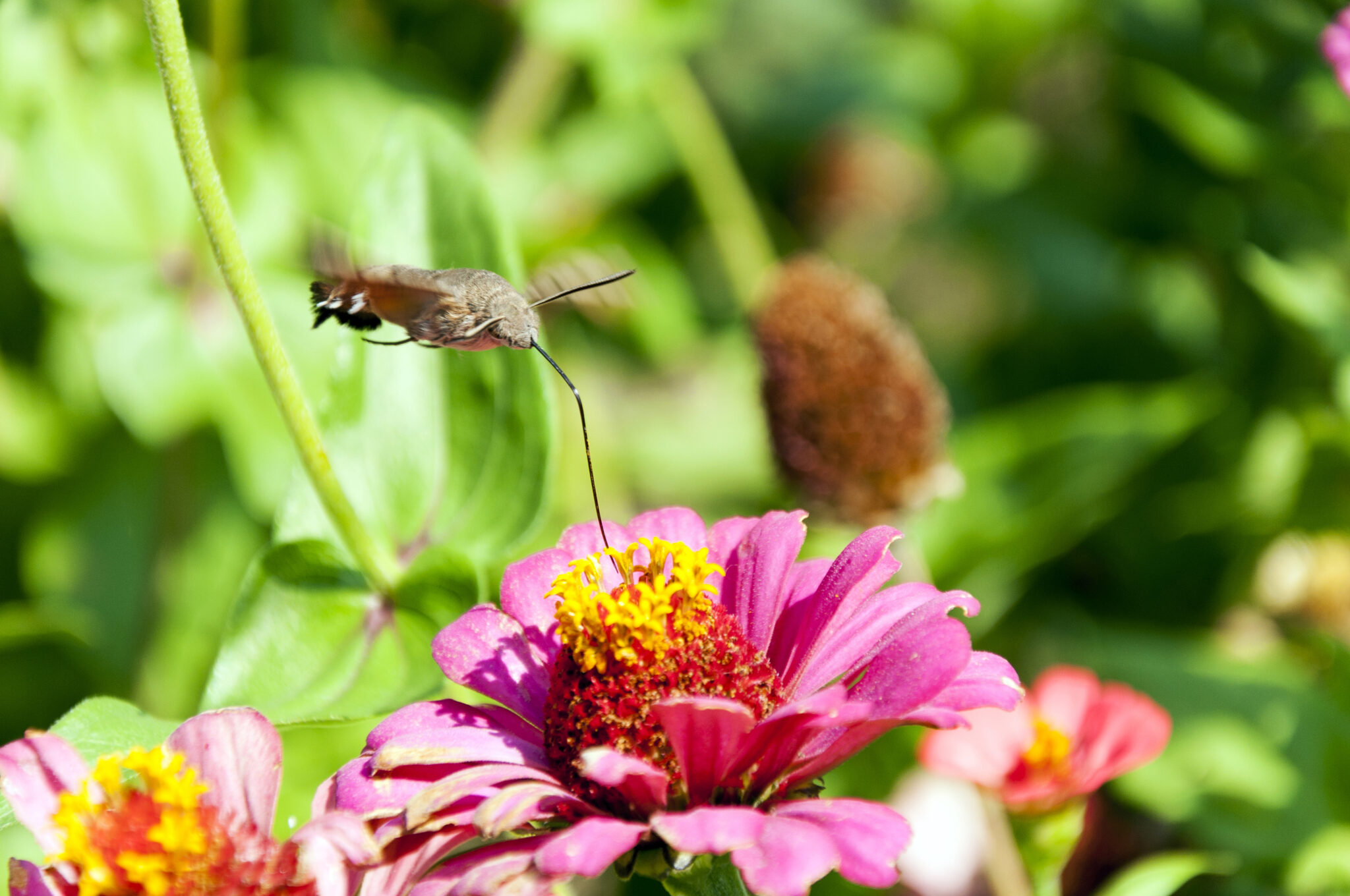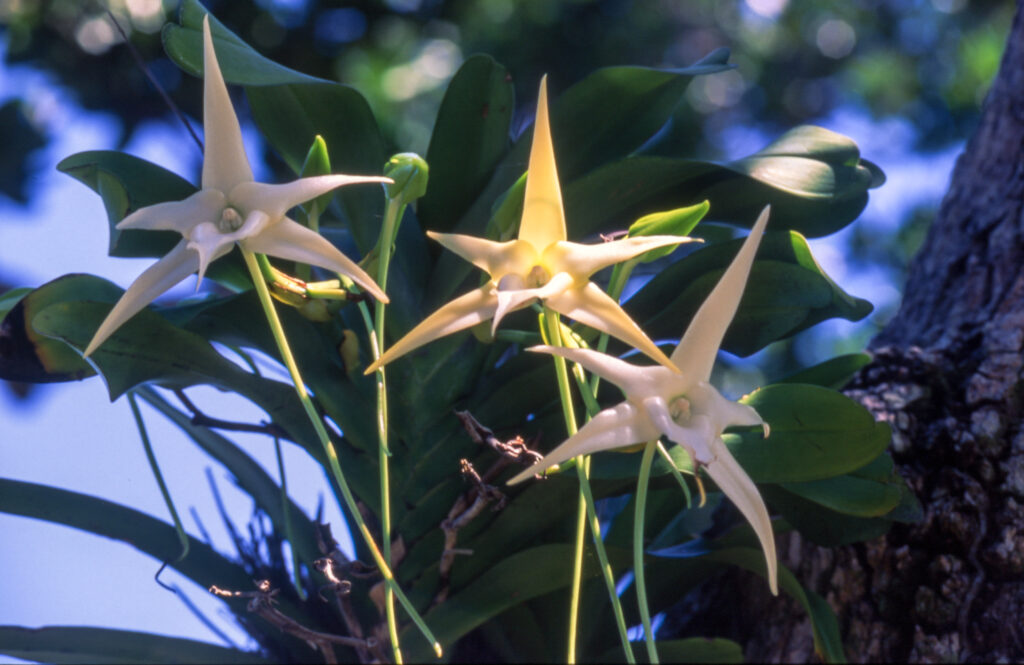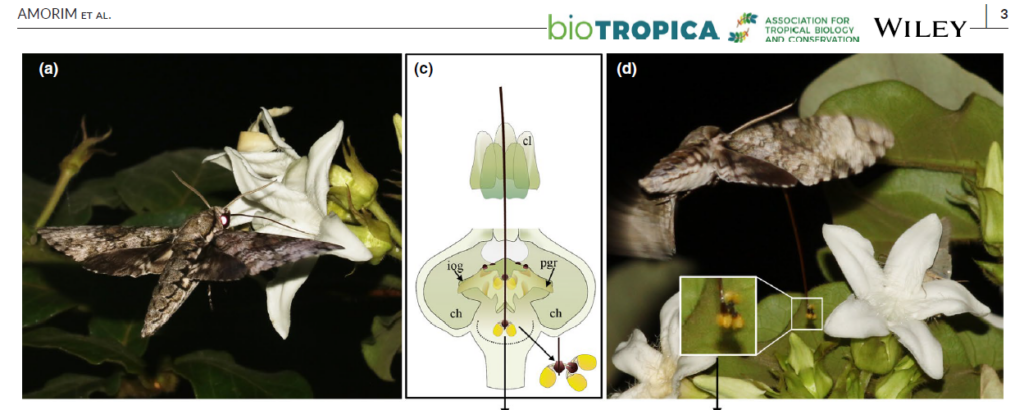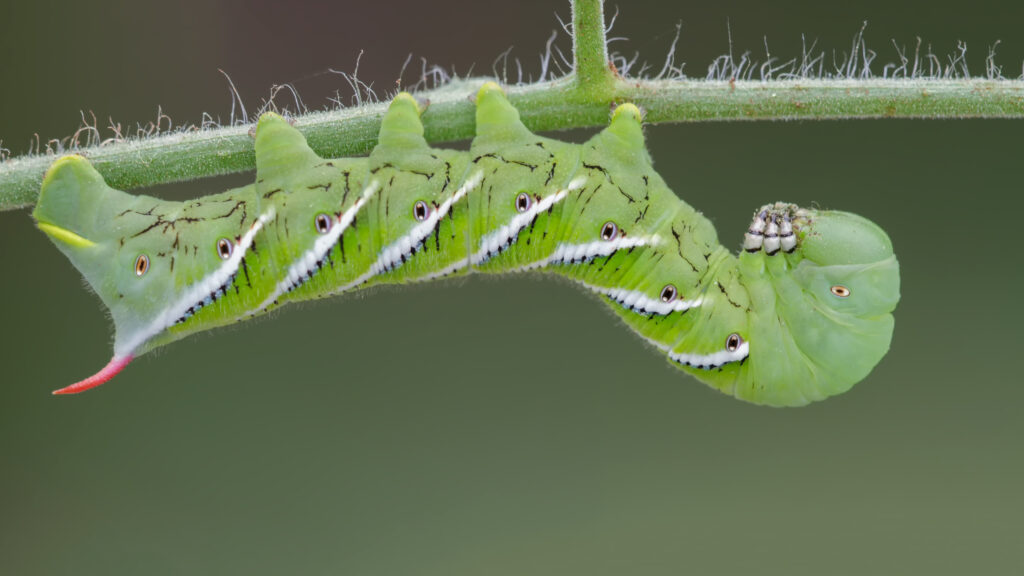The long tongued hawkmoth interspecies interactions
The long tongued hawkmoth interspecies interactions include the famous pollination relationship that was predicted by Darwin when he discovered in 1862 an orchid with a 30cm long flower

The long tongued hawkmoth interspecies interactions include the famous pollination relationship that was predicted by Darwin when he discovered in 1862 an orchid with a 30cm long flower ….. meet her
He predicted that a specialized pollinator should exists that had an adaptation that would enable this particular species to reach the nectar.
Lo and behold, forty years later in 1903 the existence of the moth was confirmed, the Darwin’s Hawkmoth (Xanthopan morganii praedicta) with a 30cm proboscis to reach the nectar.

Nevertheless, a new study shows that even short-tubed flowers can specialize on hawkmoths as pollinators.
The authors of this study show that, contrary to expectations, a species of Apocynaceae with a relatively short floral tube can specialize on hawkmoths with long tongues.
Flowers rely on highly modified corona and gynostegium, and enlarged nectar chambers, to drive visitors and pollination mechanism.
Despite its relative short-tube, network analysis placed S. grandiflora in the module including exclusively long-tongued hawkmoth pollinators and the most phenotypically specialized sphingophilous plants in the community.

Regarding the long-tongued hawkmoth interaction with its predators, recently researchers found out that Darwin’s hawkmoth males, responded to recordings of echolocation of their bat predator with such dense ultrasound that they can likely jam bat sonar to avoid being eaten.
On the other hand, the hawkmoth larvae are herbivore predators. In the United States, the caterpillars of hawk moths are known as the tomato hornworm.
Since the caterpillars are considered crop pests, pesticides aerial application have reduced the hawkmoth numbers.
Thus, the application of pesticides has also reduced the number sphinx moths that pollinate rare plants, such as desert cactus from the Sonoran desert of the United States and northern Mexico.
interspecies interactions
